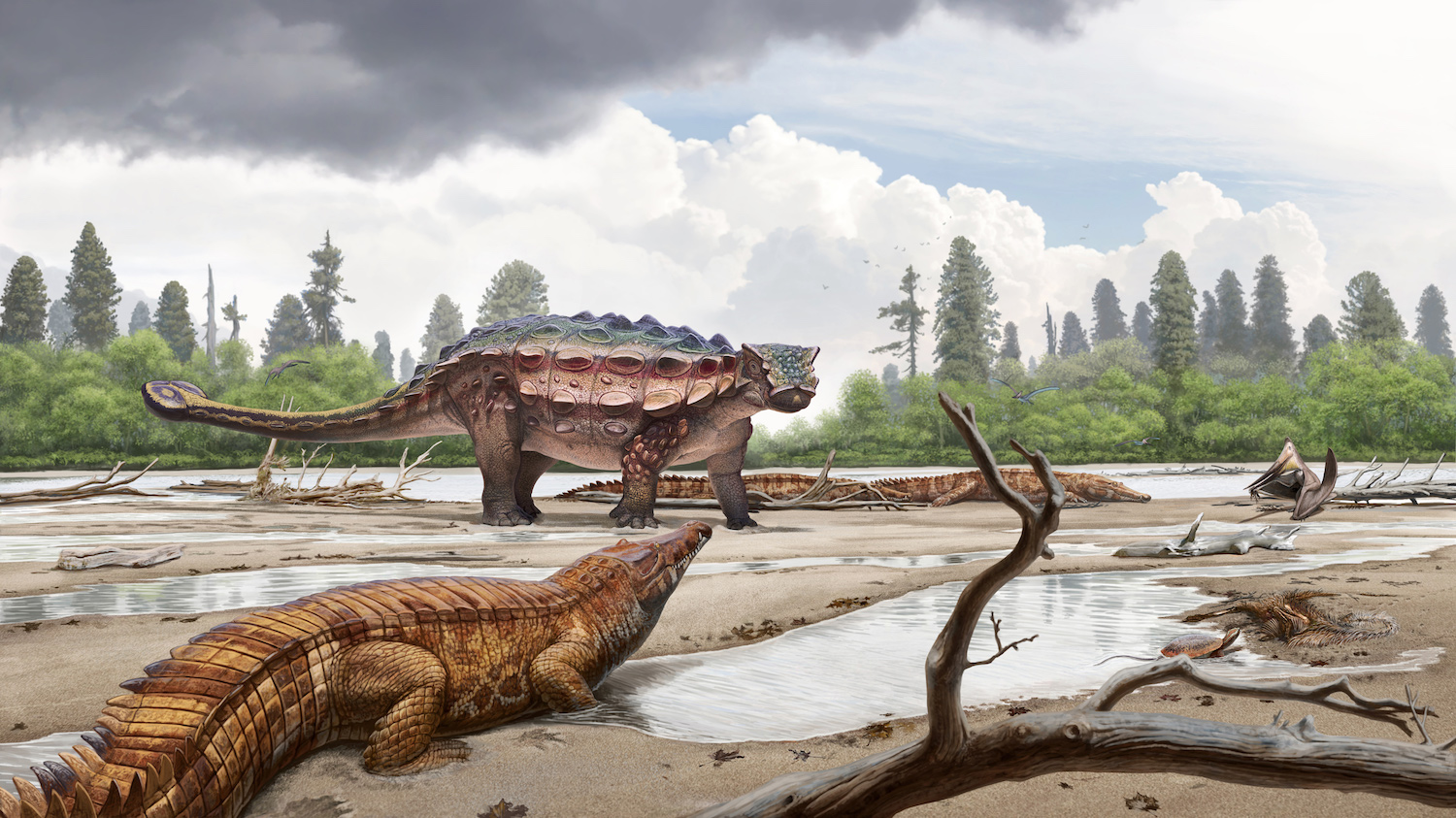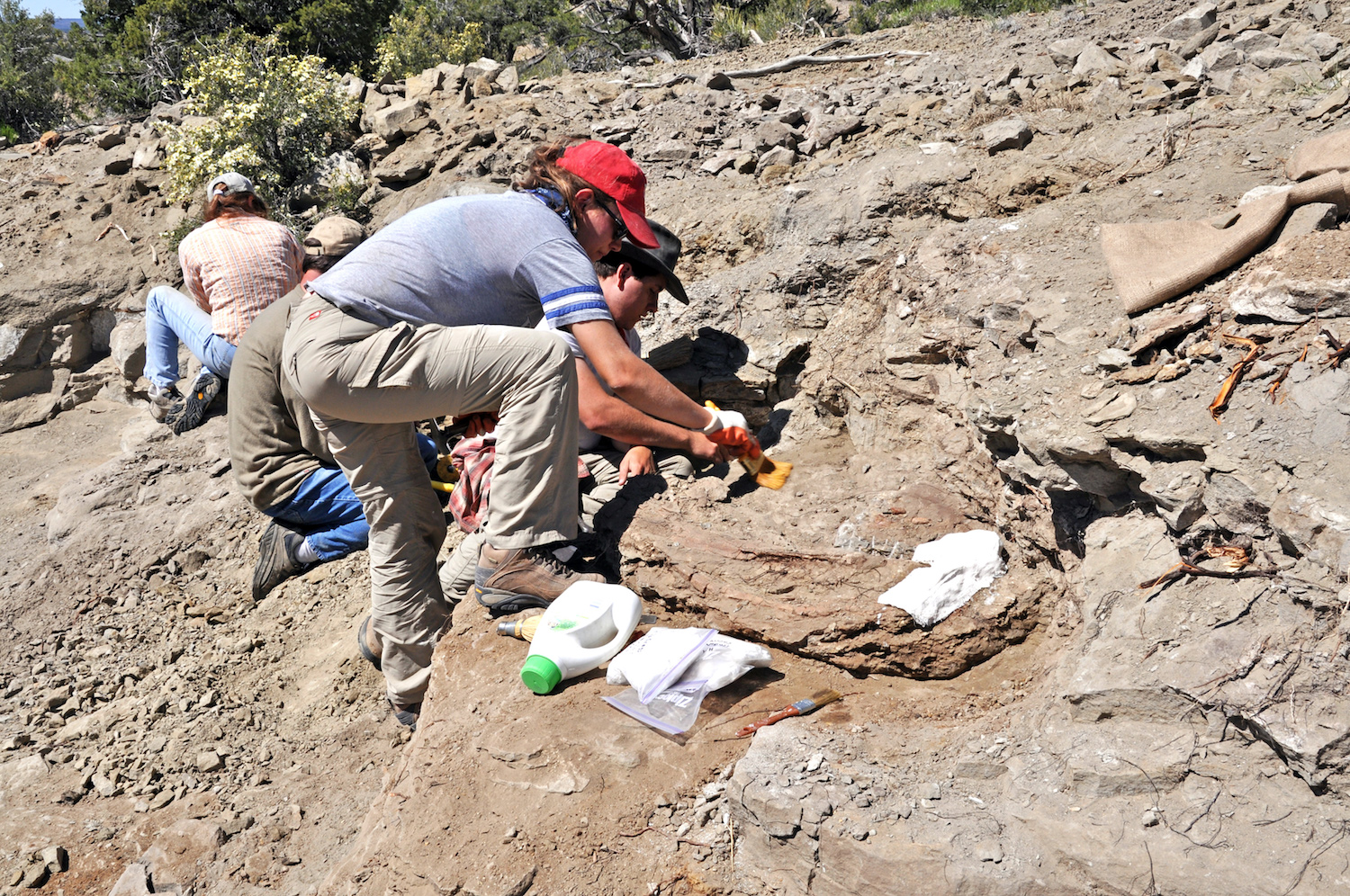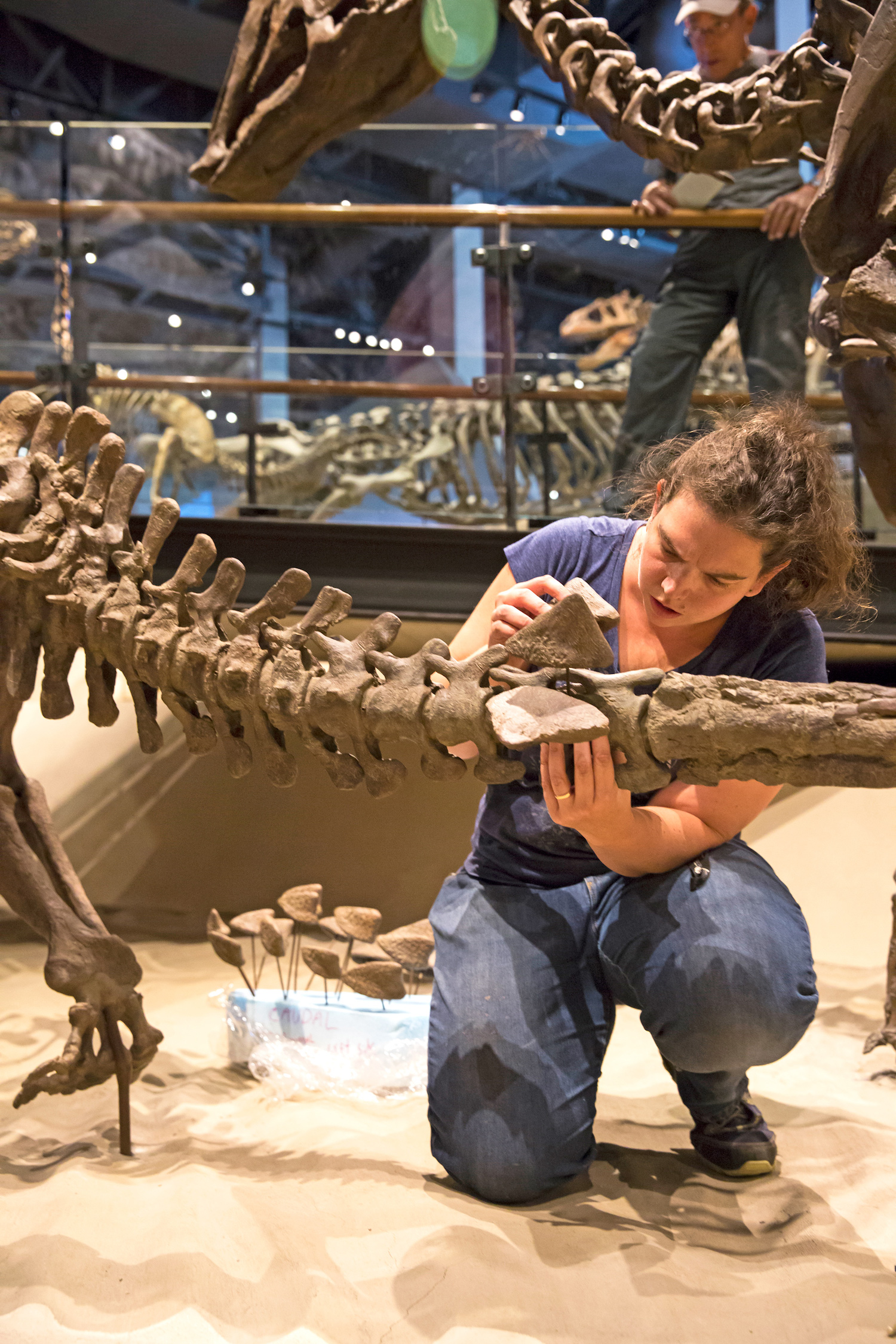Mystery of Spiky-Skulled Utah Dinosaur Solved
Most North American ankylosaurs — heavily armored, four-legged herbivorous dinosaurs that sported daunting tail clubs — had smooth, bony armor covering their skulls. And yet, this mysterious beast had an incredibly spiky head, much like the ankylosaurs of Asia.
But researchers have just solved the mystery. A new analysis indicates that the newfound, 76-million-year-old ankylosaur species, dubbed Akainacephalus johnsoni, likely had Asian ancestors that migrated to North America when sea levels between the continents were low, researchers said in a new study, published online today (July 19) in the journal PeerJ. [See Images of the Spiky-Skulled Ankylosaur]
The team found the fossils of A. johnsoni in the Grand Staircase-Escalante National Monument in southern Utah in 2008. Although parts of the roughly 16-foot-long (4.8 meters), spiky-headed dinosaur are missing, the scientists did manage to uncover a complete skull, pieces of bony armor, vertebrae and limb bones, as well as an almost perfectly preserved tail and tail club.
The paleontologists found a great number of A. johnsoni's remains — so many that after the researchers covered the finds in plaster jackets and brought them to the lab, it took nearly four years for preparators to remove the fossils from the surrounding rock and debris. The species name of the dinosaur honors museum volunteer Randy Johnson, who prepared the skull.
The genus name Akainacephalus describes the ankylosaur's unique skull, as the Greek words "akaina" and "cephalus" mean "spike" and "head," respectively.
The newfound species helps fill in a branch on the ankylosaur evolutionary tree. These dinosaurs originated in Asia between 125 million and 110 million years ago, during the Cretaceous period. It wasn't until about 77 million years ago that they started showing up in North America, according to the fossil record.
A. johnsoni's distinctive, bony armor indicates that it was closely related to the New Mexican ankylosaur Nodocephalosaurus kirtlandensis. But even though these two beasts were both found in the U.S. Southwest, they appear to be more closely related to Asian ankylosaurs, including Saichania and Tarchia, than to other North American ankylosaurs, such as Ankylosaurus and Euoplocephalus — ankylosaurs that have flat skull armor, the researchers said.
Get the world’s most fascinating discoveries delivered straight to your inbox.
"A reasonable hypothesis would be that ankylosaurids from Utah are related to those found elsewhere in western North America, so we were really surprised to discover that Akainacephalus was so closely related to species from Asia," study co-researcher Randall Irmis, a curator of paleontology at the Natural History Museum of Utah and an associate professor in the Department of Geology and Geophysics at the University of Utah, said in a statement.
Temporarily lowered sea levels at the Beringian land bridge could have allowed the Asian ankylosaurs to immigrate to North America during the Late Cretaceous, likely during several intervals between 80 million and 77 million years ago, said study lead researcher Jelle Wiersma, who was previously advised by Irmis and now is a doctoral student in the Geoscience department at James Cook University in Queensland, Australia. [Photos: See the Armored Dinosaur Named for Zuul from 'Ghostbusters']
Moreover, because the spiky-skulled A. johnsoni and the New Mexican N. kirtlandensis look different from the other North American ankylosaurs, it's safe to say that at least two immigration events took place during the Late Cretaceous, Wiersma said. (On a side note, some paleontologists think that Tyrannosaurus rex was also an Asian immigrant, Live Science previously reported.)
"It is extremely fascinating and important for the science of paleontology that we can read so much information from the fossil record, allowing us to better understand extinct organisms and the ecosystems they were a part of," Wiersma said in the statement.
A. johnsoni is the most complete Late Cretaceous ankylosaur dinosaur on record from Utah and the southwestern United States. The specimen is now on display at the Past Worlds gallery at the Natural History Museum of Utah in Salt Lake City.
Editor's Note: This story was updated to include when the ankylosaurs might have traveled from Asia to North America.
Original article on Live Science.

Laura is the managing editor at Live Science. She also runs the archaeology section and the Life's Little Mysteries series. Her work has appeared in The New York Times, Scholastic, Popular Science and Spectrum, a site on autism research. She has won multiple awards from the Society of Professional Journalists and the Washington Newspaper Publishers Association for her reporting at a weekly newspaper near Seattle. Laura holds a bachelor's degree in English literature and psychology from Washington University in St. Louis and a master's degree in science writing from NYU.





